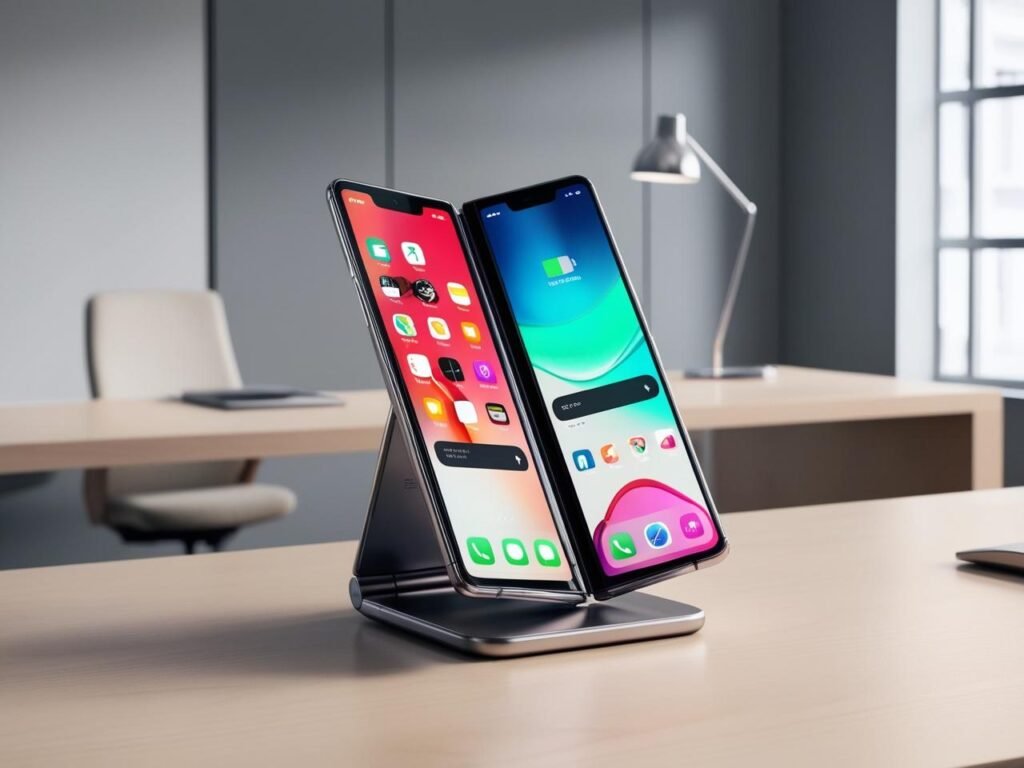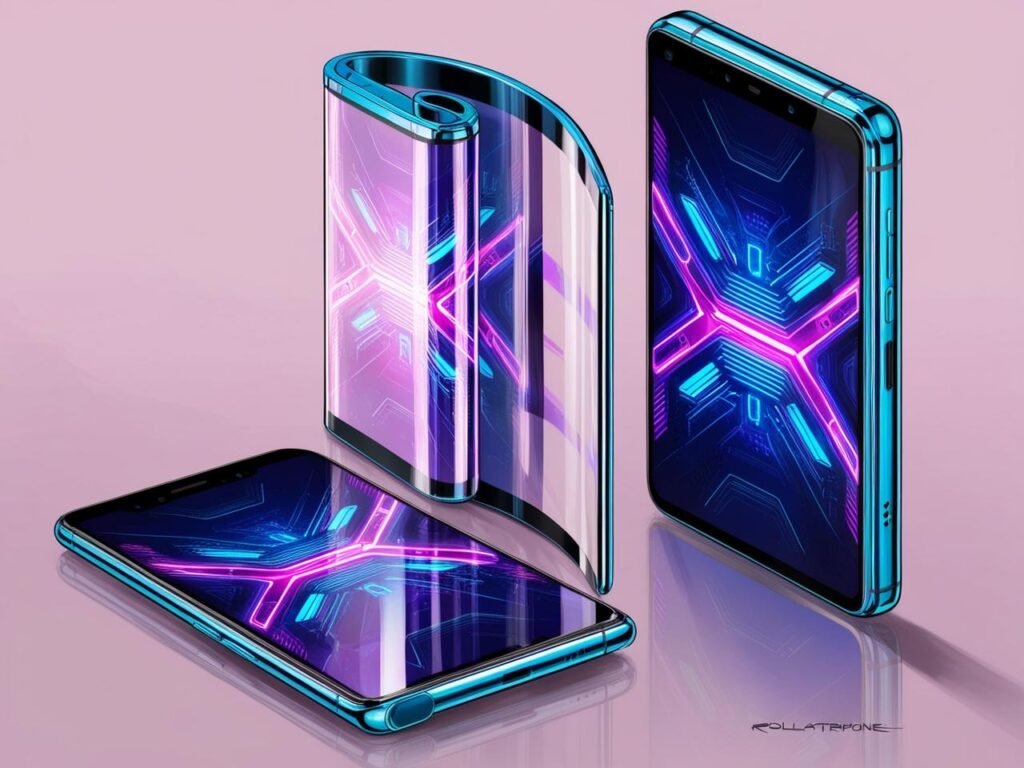Technology keeps sprinting ahead, leaving us breathless and trying to catch up. The latest contender in the race? Foldable smartphones. These bendy devices have sparked debates among tech enthusiasts, casual users, and even those who just want a phone that survives their butterfingers. Foldable phones promise to merge the portability of a phone with the screen real estate of a tablet. But here’s the million-dollar question: are they really worth it, or are we just paying a premium for a cool party trick?
Think of it this way: remember when touchscreen phones first appeared, and everyone thought, “Do we really need this?” Now, we can’t imagine life without them. Foldable phones might just be at that awkward middle-school phase of tech evolution. Let’s break down their pros, cons, and potential to find out if they’re worth the hype—or just the gadget world’s equivalent of a trendy, overpriced avocado toast.
What Are Foldable Phones, Exactly?
Foldable phones are like Transformers but without the explosions—at least for now. These gadgets fold in half like a sandwich or open up like a book, depending on the model. When unfolded, they reveal a glorious larger screen, perfect for binge-watching or diving into spreadsheets (for the workaholics out there). Samsung’s Galaxy Z Fold and Z Flip, for example, have set the stage for this category, making it feel like you’re holding a piece of the future in your hands.

Now imagine pulling out your foldable phone at a café. You’re sitting there, sipping overpriced coffee, and someone glances over as you unfold it into a tablet. They’re intrigued. “Whoa, is that a phone or a tablet?” You casually reply, “Both,” while pretending not to enjoy the attention. Foldable phones aren’t just gadgets—they’re statements. Whether you want to turn heads or simply enjoy a bigger screen without lugging around a tablet, foldables make it happen.
Foldable phones are designed to combine portability with larger screen sizes. Think compact form factor when you’re on the go, and big-screen real estate when you’re catching up on emails or gaming. But the real question is: are they worth the investment?
The Pros of Foldable Phones
Before we trash-talk foldables, let’s give credit where it’s due. These phones bring some genuinely cool features to the table.
1. More Screen, Less Bulk
Ever tried watching Netflix on your phone during a flight? It’s like trying to enjoy a blockbuster movie on a postage stamp. Foldable phones solve this by giving you a bigger screen when you need it and a compact form when you don’t. Think of it as carrying a TV in your pocket—minus the awkward bulge. For instance, the Galaxy Z Fold allows you to open up a 7.6-inch display without sacrificing portability. Perfect for streaming, gaming, or just scrolling Instagram with both eyes wide open.
Imagine you’re stuck at an airport, waiting for a delayed flight. You pull out your foldable phone, unfold it, and suddenly, your boredom transforms into binge-watch bliss. Meanwhile, the guy next to you is squinting at his regular phone, trying to read subtitles on a screen smaller than his palm. The difference is night and day—and yes, he’s jealous.
2. Multitasking to the Max
Foldable phones are the superheroes of multitasking. They let you run multiple apps side by side, like reading emails while pretending to listen to a Zoom call. For example, Samsung’s Multi-Active Window feature on foldables lets you open three apps simultaneously. Need to check your calendar, chat with a friend, and order pizza? No problem. Your foldable phone’s got your back.
Picture this: you’re on your couch with your foldable propped up, video-chatting with a friend about dinner plans while browsing recipes and checking your delivery app. All at once. Your friend’s struggling to switch between tabs on their regular phone, while you’re effortlessly juggling apps. You might even feel a little smug—and let’s be honest, that’s part of the appeal.

3. A Head-Turner
Let’s be real: foldable phones are the ultimate conversation starter. Whip one out, and you’re instantly the center of attention. “Whoa, is that a phone? A tablet? A transformer?” It’s the kind of tech that screams, “Look at me, I’m living in the future!”
4. Gaming and Entertainment
For gamers and media enthusiasts, foldables offer immersive experiences that standard phones can’t match. The bigger screen enhances visuals, making everything from epic battles to rom-coms more enjoyable. Plus, the folding mechanism adds an ergonomic edge—prop it up like a mini TV, and you’re good to go.
The Cons of Foldable Phones
As much as we’d like to believe foldables are the holy grail of smartphones, they’re not without flaws. In fact, some of their downsides are pretty significant.
1. Price Tag Panic
Let’s address the elephant in the room: these phones are expensive. With prices starting at $1,500, a foldable phone costs more than some people’s monthly rent. For that kind of money, you could get a high-end laptop, a tablet, and probably still afford a decent steak dinner. Unless you’ve got disposable income or an urgent need to flex, the cost is a hard pill to swallow.
Imagine this: you finally decide to buy a foldable phone, and your friends are all excited to see it. You unfold it with a flourish, and someone asks, “How much did it cost?” You mumble the price, and they stare at you like you just said you sold a kidney. Cool factor aside, that price tag is enough to make anyone hesitate.
2. Durability Drama
Foldable phones may look futuristic, but their durability is still stuck in the past. The flexible screens, made from ultra-thin glass or polymers, are prone to scratches, creases, and general wear-and-tear. Remember the Galaxy Fold’s infamous screen issues? It’s like buying a Ferrari but worrying it might fall apart if it rains.
Here’s a real-life horror story: a friend buys a foldable phone and drops it on Day 2. The screen develops a crease that looks like someone ran over it with a toy car. Suddenly, that cutting-edge design feels like a liability. Foldable phones may be cool, but they’re not exactly rugged warriors.
3. Battery Life Blues
Bigger screens mean bigger power consumption. While foldable phones do pack larger batteries, they often struggle to keep up with the demands of dual displays and multitasking. If you’re someone who’s glued to their phone all day, you might find yourself hunting for a charger more often than you’d like.
4. Limited App Optimization
Despite their potential, foldable phones are still a niche product, and many apps aren’t optimized for their unique form factors. You might encounter weird glitches, distorted layouts, or simply apps that refuse to take full advantage of the folding mechanism.
The Future of Foldable Phones
So, what does the future hold for these bendy gadgets? Are they just a passing fad, or are they here to stay?
1. Improved Durability
Tech companies are working overtime to address durability concerns. With innovations like stronger hinges and tougher screens, future foldables might finally survive the rigors of daily life. Samsung has already introduced Ultra Thin Glass (UTG) for added durability, but we’re still waiting for the day when foldables can survive being dropped in the driveway without turning into expensive origami.
Think of it like the early days of touchscreen phones. Remember how fragile they were? Now, they’re practically indestructible (okay, almost). Foldable phones could follow the same path, evolving into gadgets that combine style with resilience. Until then, handle with care—or invest in a really good case.
2. More Affordable Options
As with any new technology, prices are bound to drop as production scales up. What’s a luxury item today might be a mid-range option tomorrow. Companies like Xiaomi and Oppo are already working on budget-friendly foldables, bringing the dream of owning one closer to reality. Imagine buying a foldable phone without selling your car—sounds nice, doesn’t it?
Picture this: it’s 2028, and you walk into a store to buy a phone. Foldables are now as common as regular smartphones, and their price tags no longer require a second mortgage. You smile, thinking about how far we’ve come. The future might not be here yet, but it’s definitely on the way.
3. Better Software Support
Developers are gradually catching up with foldable tech, optimizing apps to work seamlessly across different screen sizes and orientations. This will unlock the true potential of foldables, making them more versatile and user-friendly.
4. Diverse Designs
The future might bring even more innovative designs, like rollable screens, tri-fold displays, or devices that fold both inwards and outwards. Imagine a smartphone that can expand into a tablet or shrink into a smartwatch—sounds wild, but it’s closer than you think.

Are Foldable Phones Worth It?
Now for the million-dollar question: should you buy a foldable phone? Well, it depends. If you’re an early adopter who loves cutting-edge tech, a foldable phone might just be your new best friend. But if you’re cautious with your money or need something indestructible, it’s okay to wait.
Foldable phones are like the sports cars of the smartphone world—flashy, exciting, and undeniably cool, but not always the most practical choice. As the technology matures, we’ll likely see foldables that are more affordable, reliable, and optimized. Until then, it’s up to you to decide whether the hype is worth the investment.
Conclusion
Foldable phones are a fascinating glimpse into the future of mobile technology. They combine innovation with functionality, offering a unique experience that traditional smartphones simply can’t match. However, they’re not without their flaws, from sky-high prices to durability concerns, foldables remain a work in progress.
If you’re intrigued by foldable phones and want to explore your options, check out the latest deals here. Whether you’re ready to take the plunge or just curious about what’s next, there’s no denying that foldables are shaking up the smartphone industry in a big way.

